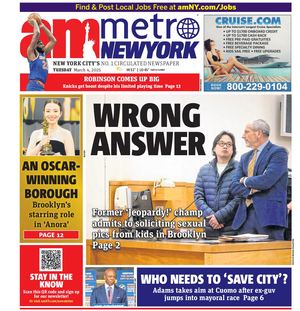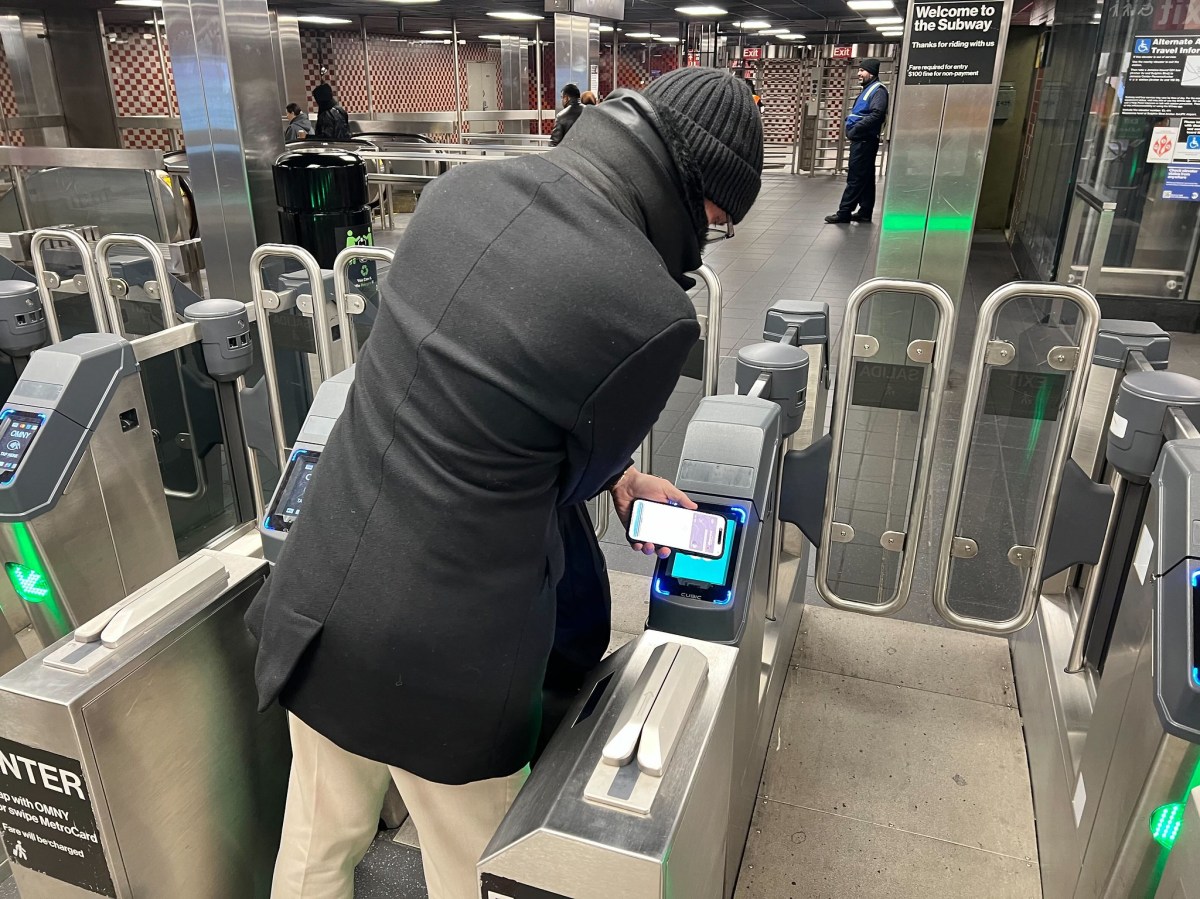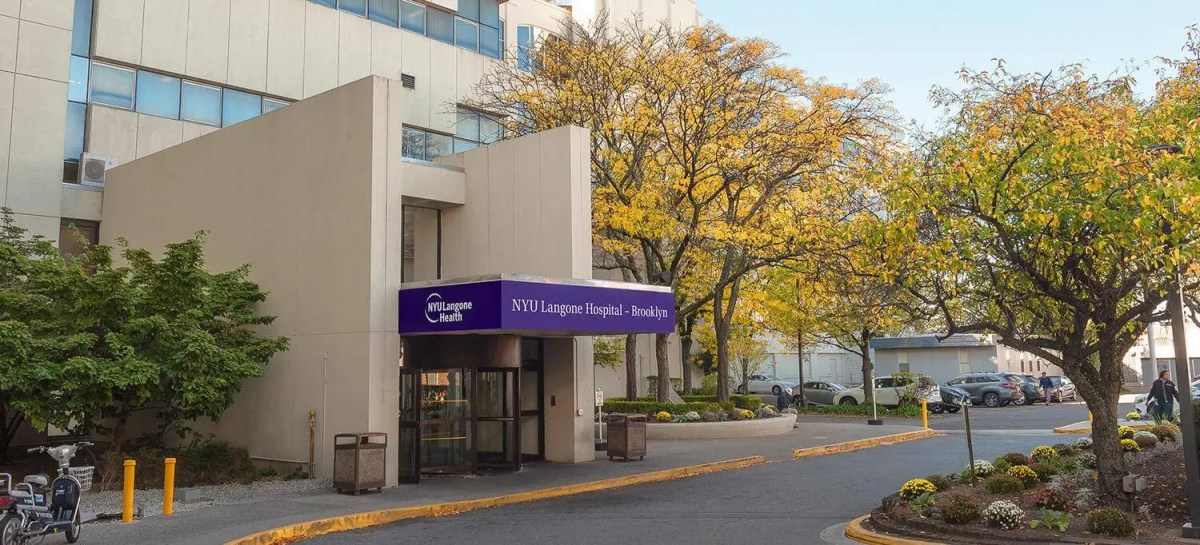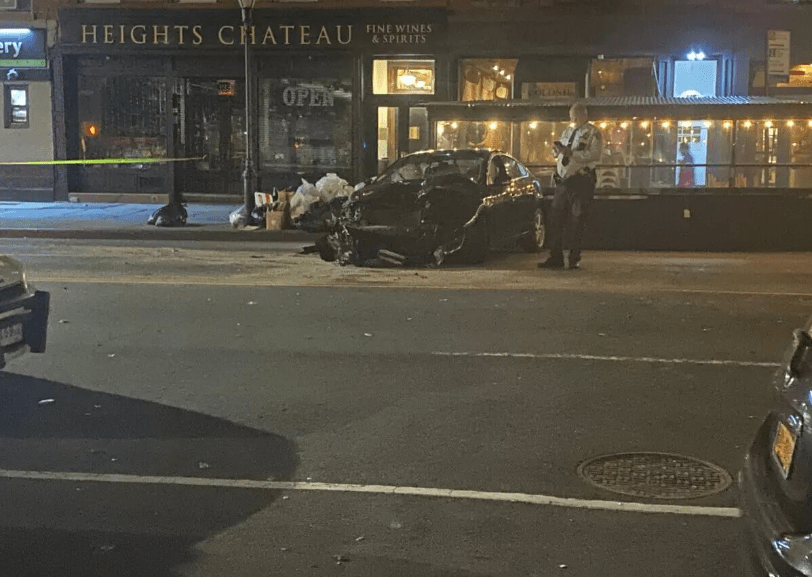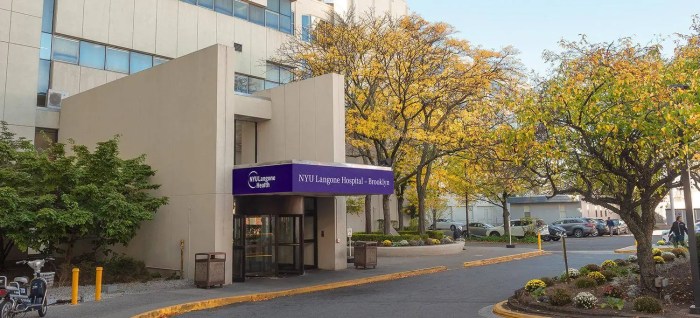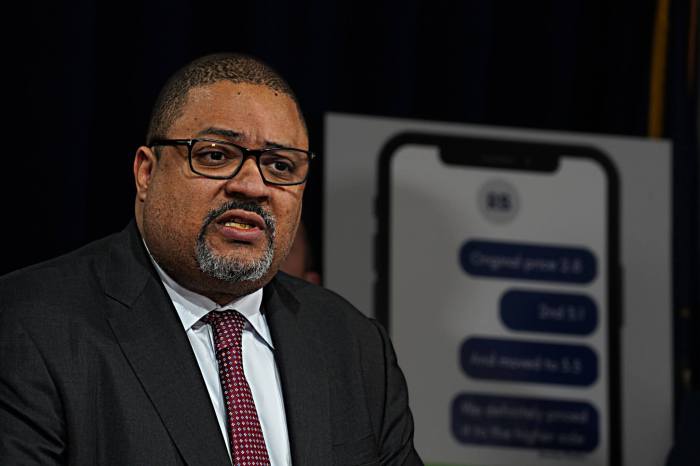Top officials admitted on Wednesday that the MTA is behind on its plans to pilot new “middle-out” turnstiles at over a dozen subway stops.
MTA brass said in May that 15 stations in four boroughs would be outfitted with modern turnstiles. This is intended as a test for a modern fare array that emphasizes combatting fare evasion.
But asked about the status of the project following the monthly MTA Board meeting on Wednesday, construction and development chief Jamie Torres-Springer said “some components” could be expected by the end of the year but wouldn’t divulge if those will be deployed to 15 stops.
“We’re working through some kinks with some technology that we want to pilot, and we’ll give you some more news on that soon,” Torres-Springer said.
The nature of those kinks was not immediately made clear. Still, MTA chief executive Janno Lieber noted that any new fare gate “would have to be made compatible” with Cubic Transportation Systems, the operating vendor of both the OMNY and MetroCard systems.
“There are technical complexities to that,” he added.
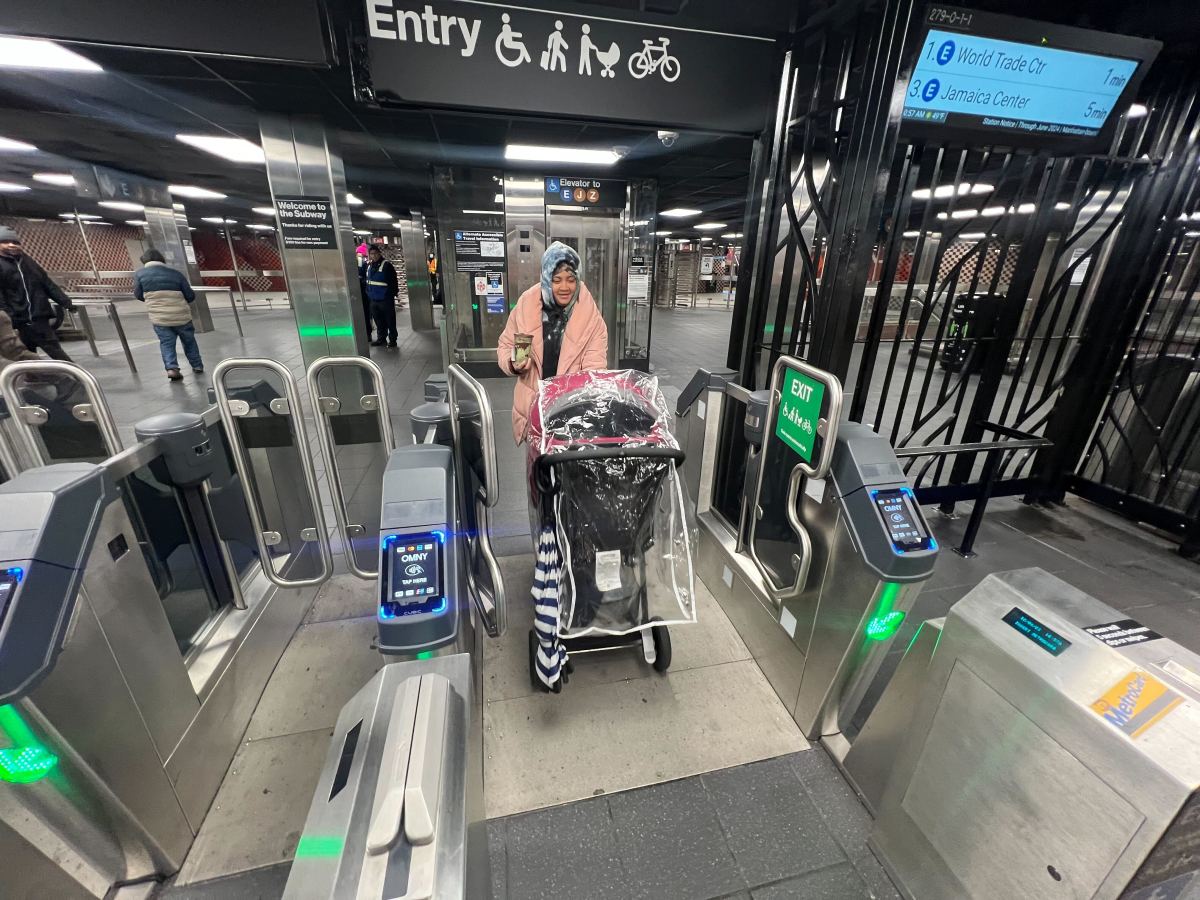
The MTA announced the new gates would be expanded to 15 stops by the end of 2024 in a pilot program, beyond the four laboratory stations being used at the time. The tech is being tested at 34th Street-Penn Station in Manhattan, Atlantic Avenue-Barclays Center in Brooklyn, and Astoria Boulevard and Sutphin Boulevard-Archer Avenue in Queens.
An MTA spokesperson said the prototype gates are still being tweaked to be more resilient to fare evasion, hoping to avoid embarrassing snafus like what occurred at Sutphin-Archer earlier this year, when naughty riders discovered a hack to easily get through the new gates and posted it on social media for all to see. The authority expects to have more resilient gates at three more stations by the end of the year.
The MTA is currently sending a “request for information” to vendors seeking prototypes for new fare gates to test across the system. The agency is specifically seeking gates that are harder to jump than the current turnstile design as it faces a chronic fare evasion problem expected to cost $800 million this year in foregone revenue.
The spokesperson said that fare revenues have increased 20% since the gates were deployed to Sutphin-Archer, the only station of the quartet where all the turnstiles have been modernized. At the other three, the gates are being tested alongside traditional turnstiles.
In its new five-year, $68 billion capital plan, the MTA intends to spend $1.1 billion to modernize turnstiles at 150 stations, capturing about 75% of the system’s ridership. The plan is only half-funded, though, and Gov. Kathy Hochul has suggested the plan may ultimately be shrunk in scope, with items of less urgent priority making way for investments in keeping the system in a “state of good repair.”
Fare evasion on the subway also pales compared to the problem on the bus, where nearly half of riders are now skipping payment. The MTA has recently stepped up blitzes against fare evaders, yanking scofflaws off buses and slapping them with a $100 fine.
Lieber said Wednesday there are “significant indicators of success” on lines that have been blitzed and said paid ridership on buses was higher in September than in August, but it’s unclear if that was due to enforcement or because of new Student OMNY cards.
